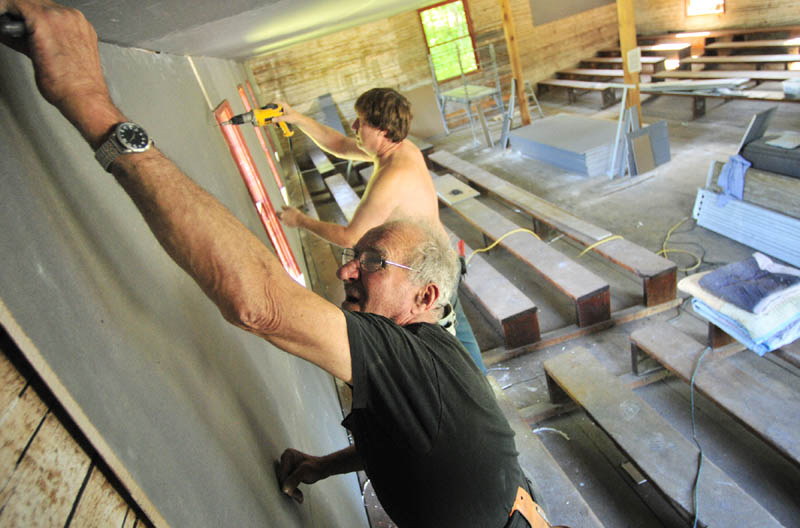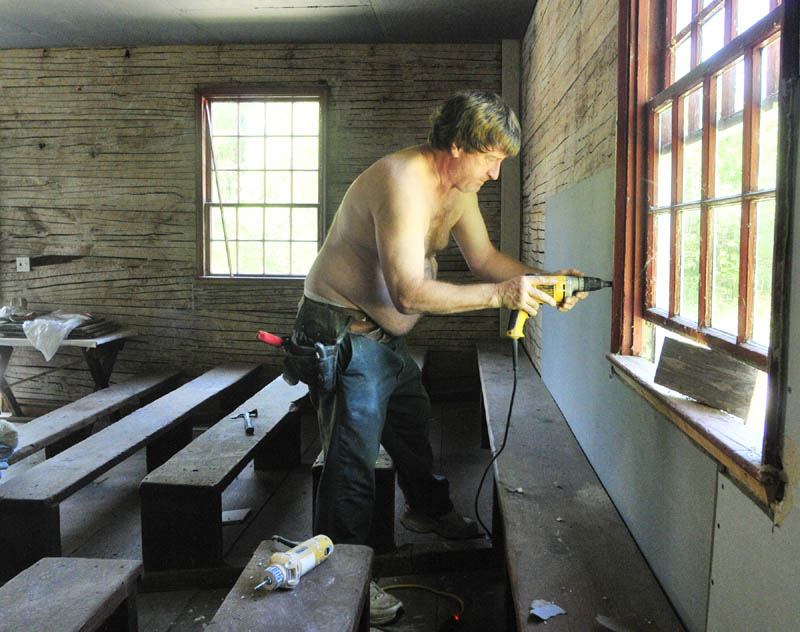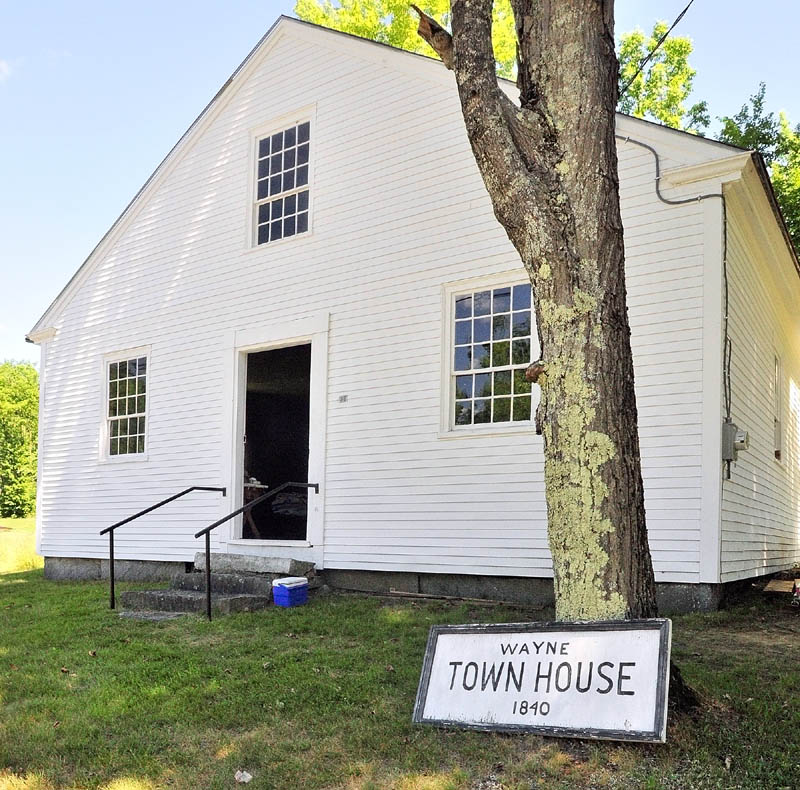WAYNE — Large panels of gray wallboard went up Friday over the laths that formed the interior walls of the Wayne Town House.
It was quite visible progress in the renovation of the town-owned building, which served for 150 years as the site of the annual Town Meeting and for a while as the Town Office.
The building, which stands on Route 133 near the intersection with Pond Road, was erected for a total of $358.25, records show. Recent renovations to date have cost $14,000, according to Wayne Town Manager Amy Bernard.
About $11,000 came from a dedicated account, and the remainder has come through the fundraising efforts of the Wayne Historical Society.
“I don’t know what it’s going to be used for, but I know if we don’t fix it, it won’t be used,” said Robert Stephenson of Wayne, a preservation enthusiast who supervises the work on the town’s behalf.
He showed where newly placed posts helped correct the sagging floor as Don Laliberte, of Mount Vernon, owner of Don Laliberte Dry Wall, measured the wall, then the board, before hanging it with the assistance of Earle Welch, of Wayne.
On Thursday, Laliberte and Welch had hung wallboard on the ceiling, leaving a small opening to provide access to the empty second floor.
“The ceiling came out nice,” said Wayne Selectman Carroll Paradis, who lives near the Town House and came by for a look.
Stephenson pointed to the walls where the laths were still visible. The lines follow the grain of the wood, he said, describing that as an effect achieved when the boards were struck with an ax. The result allowed plaster to adhere.
He said a good deal of preparatory work was needed prior to the installation of wallboard.
Although the building has electricity, there is no running water, no septic system and no heat other than that provided by a woodstove near the door.
“The irony is that Town Meeting was at the end of March,” Stephenson said. “It was cold.”
The attendees sat according to gender — women on the right benches, men on the left — a tradition that was carried on until the meeting was moved.
“It was for easy evacuation in case (the men) had to respond to emergencies,” Paradis said. “And women didn’t have the right to vote, so it was easy to count ballots.” Stephenson said the annual meeting, where residents conducted the town’s business, passed ordinances and set the budget, held a special attraction.
“It was a chance to vent after several months of being isolated,” he said. “They could have told off their neighbors. It must have been really classic.”
On one of the thick benches on the men’s side, block letters “ERE” are carved into the seat, probably by someone bored by the length of the meetings, which could take all day, sometimes with breaks.
On June 26, 1991, the Town Meeting was relocated to the Ladd Center about 20 minutes after it began, “because the old building could not safely support the large turnout of citizens,” according to notes from the time.
Restoration efforts, which began in 1997 when the town received a matching grant from the Maine Historic Preservation Commission, so far have included removing the former selectmen’s office, rebracing the roof and replacing roof boards destroyed by dry rot and mold, and the installation of a steel roof crafted to look like shingles. Deteriorating clapboards have been replaced as well, and windows have been scraped and repainted.
“The plan is to get it to look somewhat like it would have back in 1800s,” Bernard said.
However, the plan called for replacing the horsehair plaster with wallboard.
“Ideally, we would like it to be used in some fashion,” Bernard said, saying it could be a used as a “historical place where students can come and learn about town government or a museum.”
The Town House is on the site of the National Register of Historic Places.
Betty Adams — 621-5631
badams@centralmaine.com
Send questions/comments to the editors.





